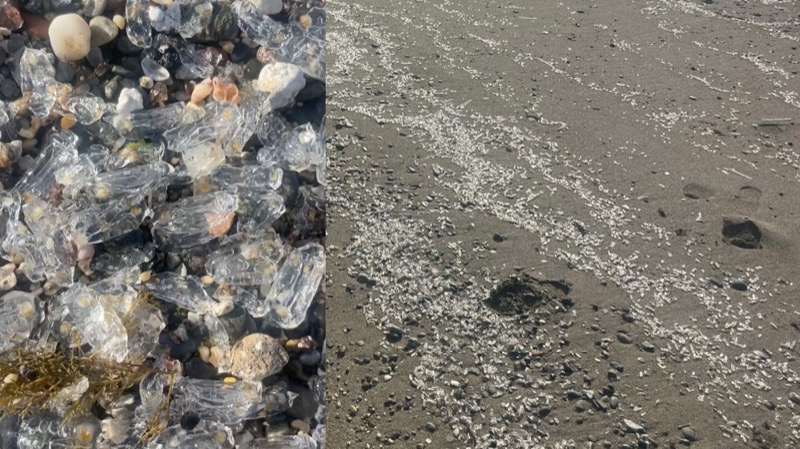Gelatinous organisms invade the shore of Fuente Caballos
Although it has caused surprise among visitors, it is not exceptional | They are gelatinous salpa-type invertebrates that sea turtles feed on.
These invertebrates usually live in “the open sea, although currents, wind or temperature changes can influence excessive production that ends up taking them to the shores, especially in the Alboran Sea area during this time, since the temperature The sea has not gone down much yet,” said Óscar Ocaña, marine biologist and director of the Ceuta Sea Museum Foundation.
They can be easily confused with jellyfish; However, their danger is not the same. That is their fundamental difference: they are totally harmless and they are exceptionally fragile.
Regulars of this central beach in Ceuta have been able to find these small, gelatinous and transparent organisms along its shore.
“More specifically, it is a tunicate (animal kingdom phylum chordates; subphylum tunicata) that associates or groups to form chains with sexual individuals; That is to say, they are aggregates but it is not a colony per se,” indicated the biologist, adding that their quantity has come to surprise those who have been able to observe this phenomenon early in the morning.
And when "they appear en masse it is because they are in their gregarious phase", that is, "they move in groups or chains for reproduction reasons", which is what could be seen this morning.
However, Ocaña has pointed out that "from an ecological point of view they form concentrations of chains that travel through the body of water and are part of the diet of many organisms, including some corals and vertebrates, highlighting that they are the usual food of many turtles present on our coastline, such as the leatherback turtle.”
You can see their similarity in appearance with the plastics found in our seas, which causes serious poisoning and buoyancy problems for the turtles, but the biologist has highlighted, above all, that "they are harmless, they do not sting and they are part of the food chain of these leatherback turtles, which are specialized in feeding on gelatinous plankton, which is the most prominent on our coasts.”
Some citizens, given their low risk of contact, have returned specimens to the sea, although their enormous quantity has made it almost impossible.



No hay comentarios:
Publicar un comentario